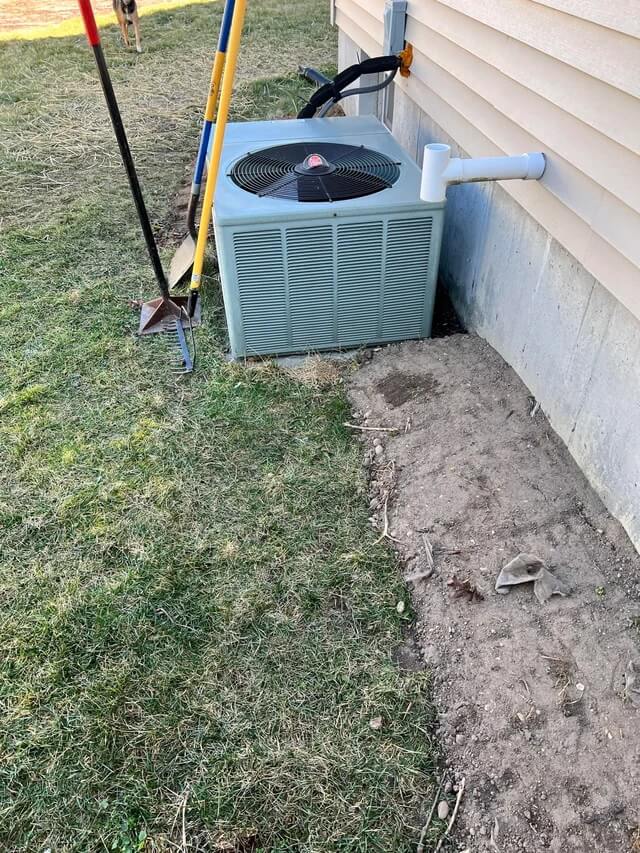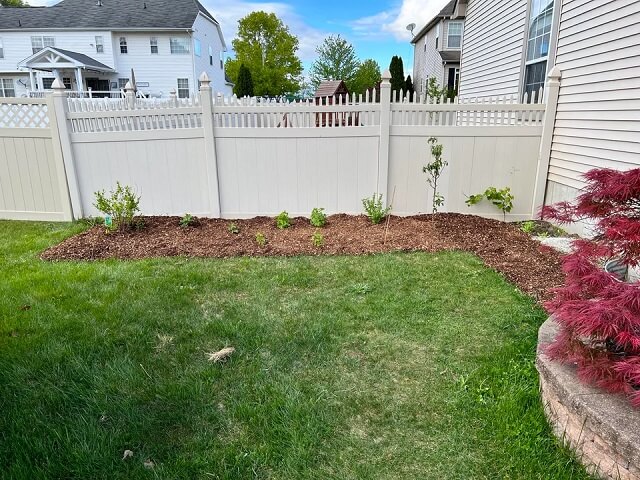One gardener's practical and low-effort update to their yard turned out to be unexpectedly beautiful as well as functional.
Rain gardens are a popular and natural way to deal with excess water pooling in your landscaping. Basically, you identify or create a low area in your yard, grade the surrounding surfaces so that all the water runs to that spot, and then plant deep-rooted, water-loving plants.
The plants keep the soil loose so water can soak in faster, minimizing expensive flooding damage and erosion, and the extra water keeps the plants happy and healthy. They can handle a surprising amount of water, as one landscaper's recent video shows.
This Redditor was shocked to discover just how healthy. "Garden that started off as a solution to a drainage problem and grew flowers that are taller than me in one season!" they said in their post.


They also shared a series of progress photos showing how their rain garden developed. The first few photos illustrate how water pools in the lawn around the homeowner's window well and exterior air conditioner, leaving an unpleasant, muddy mess. However, they've cleared space to plant their new garden along the side of the house and fence.
In the next few photos, they've laid down mulch and put in several plants, saplings, and flowers. Eventually, early blossoms become a thick tangle of flowering bushes that wrap around the side of the home, eagerly drinking up the extra water.
Save $10,000 on solar panels without even sharing your phone number Want to go solar but not sure who to trust? EnergySage has your back with free and transparent quotes from fully vetted providers that can help you save as much as $10k on installation. To get started, just answer a few questions about your home — no phone number required. Within a day or two, EnergySage will email you the best local options for your needs, and their expert advisers can help you compare quotes and pick a winner. |
According to the original poster, getting started wasn't complicated. "I used several different bags of mixed wildflower seeds," they said in a comment. "One was from the hardware store, but I got some others online that were supposed to be native to northeastern U.S.A."
"This is beautiful," said one commenter.
Others had a few suggestions for improving the flower mix in the rain garden.
"Since you have moisture issues I would recommend seeking out native plants that enjoy periodical moisture," one user recommended. "Depending on your area you can look for obedient plant, false sunflower, bottle gentian and/or wild mint. Find out what's local; don't trust the hardware stores, as they fill 'wildflower' seed bags with all kinds of European, Asian, and South American plant varieties."
TCD Picks » Upway Spotlight
💡Upway makes it easy to find discounts of up to 60% on premium e-bike brands
Join our free newsletter for easy tips to save more, waste less, and help yourself while helping the planet.















